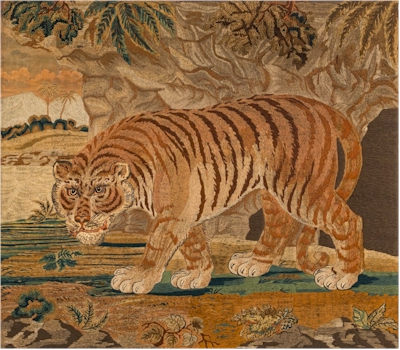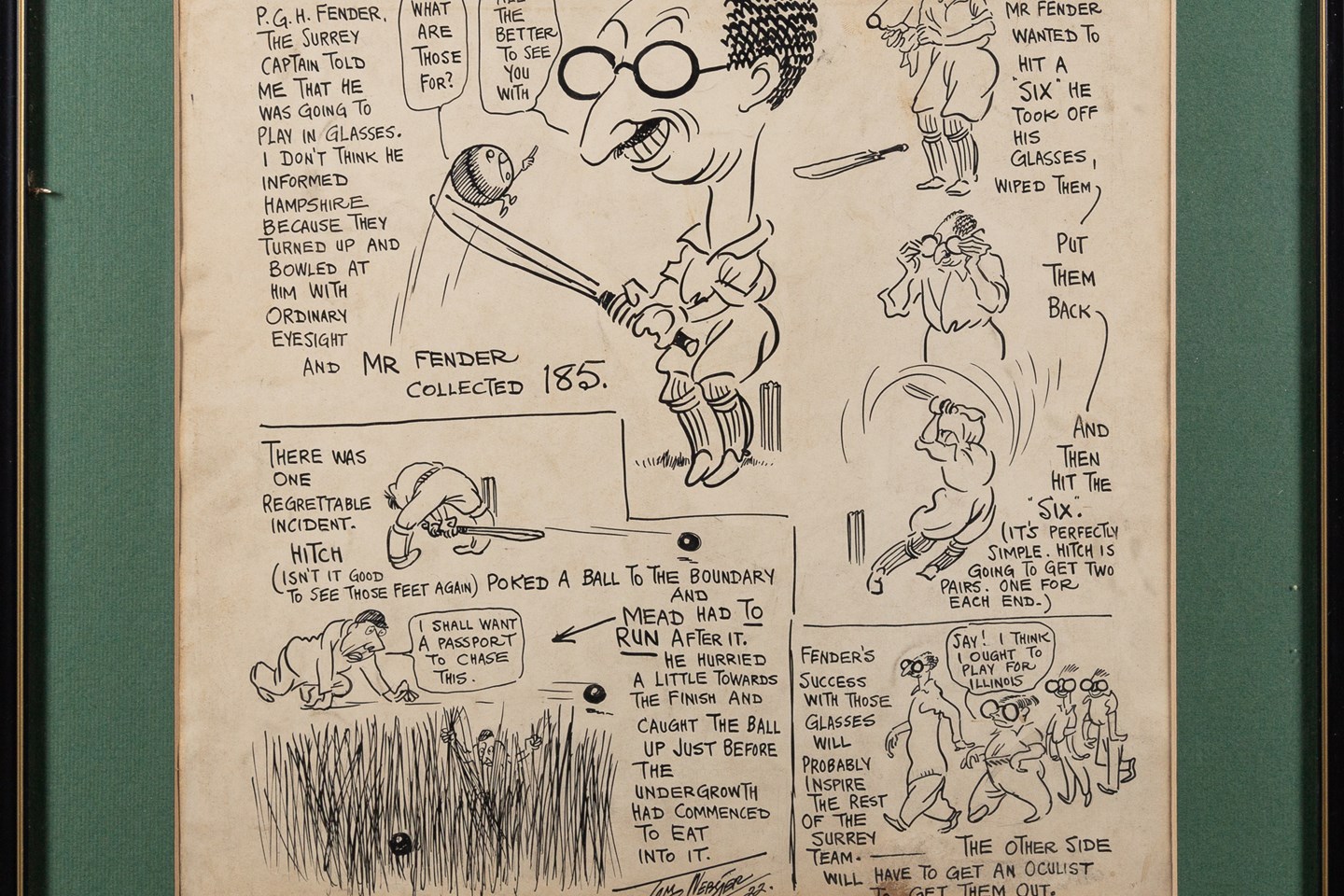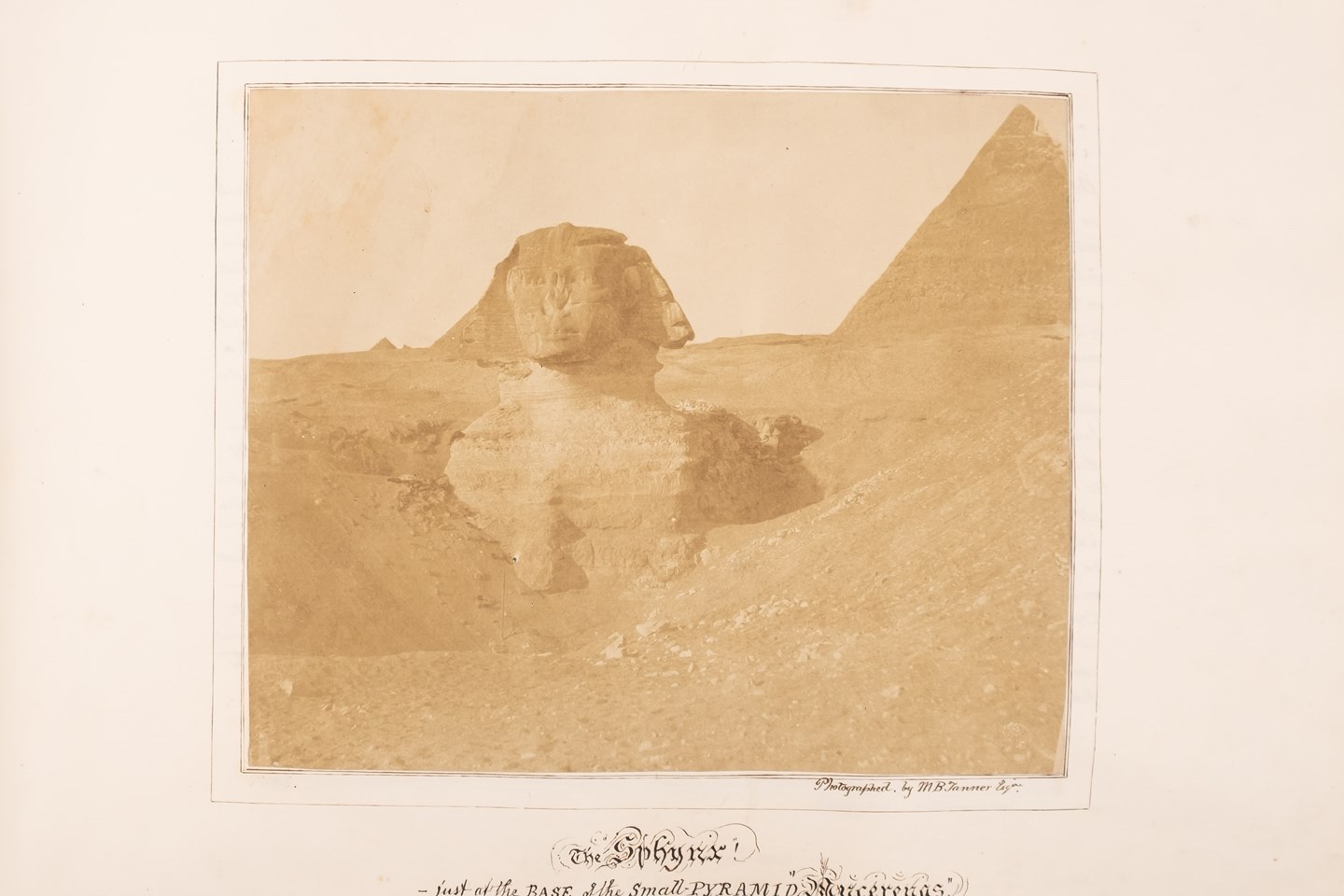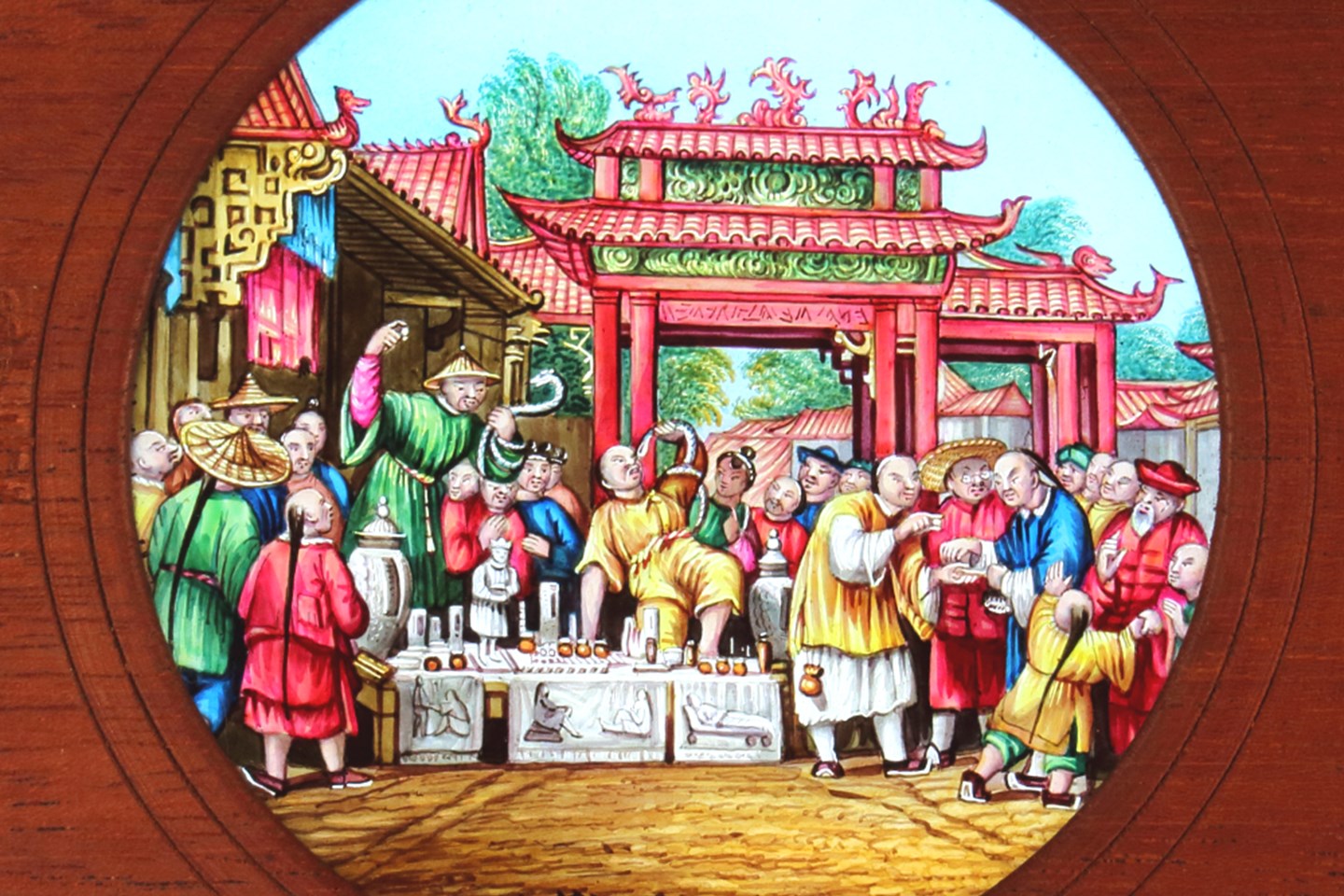
A particularly large needlework picture of a tiger that is included in the sale on 10th March 2020.
Antique dealing has been the Butler family business in Honiton, Devon, for over seventy years. For Roderick, a second-generation antique dealer and his wife and business partner Valentine, who trained as a cabinet maker at the London College of Furniture, building a personal collection of fine examples of various art forms, primarily English with the early periods being of particular interest, has also been the project of a lifetime. As they look to the next chapter of their lives, this collection is now to be sold before, as in their words, they too "become antiques".
Roderick joined the family business at Marwood House, Honiton, in 1957. In the subsequent six decades, he has built a reputation not only as a respected dealer but as an authority, particularly on early furniture and metalwork. He is a Fellow of the Society of Antiquaries, has been a longstanding member of the British Antique Dealers Association and was for a number of years on the vetting panel of the Grosvenor House Antiques Fair, chairing it in its end-days. His and Valentine's avid enthusiasm for antiques, together with the history behind them, is evident in their combined research efforts and published papers, consultancy work for various museums, membership of the Antique Metalwork Society, Regional Furniture Society and a number of specialist exhibitions held at Marwood House. These include "The Art of the Woodcarver", "Chairs through the Four Centuries", "Marked Brass" and "English Bronze Cooking Vessels" (a collection of over 200 items subsequently acquired by Somerset County Museum). Many items from their exhibitions are included in this sale.
The majority of the Butlers' collection was purchased here in the West Country. Whilst most items were sold-on through their antiques business, those pieces that they kept are all notable in some way; be that for their quality or originality, colour or rarity, and many of these pieces offered in the sale have not been on the open market for some sixty years. The glazed mahogany standing corner cupboard, the Fulford bed hangings and the Prime Ministerial seal are amongst many pieces in the sale that were bought from Bearnes in Torquay in the late 1950s and 1960s. Some of the interesting individual collections within the collection as a whole are highlighted here:
The Bellows (Lots 392-415)
It is difficult to think of any other human invention requiring three specific elements - wood, leather and metal - that has survived in form totally unchanged for at least seven hundred years and which is still an essential piece of hearth equipment. See the travelling tinker, his kit and bellows on his back, illustrated in the Luttrell psalter c1320-40. There are none of that age here, but two 17th Century dated examples, lots 397a and 412. Others with maker's names, including lot 401 by Alldays & Onions, who later manufactured cars and a pair ascribed to a Philadelphia maker, lot 395.
The Cast Bronze Cooking Vessels & Mortars (Approx 20 Lots)
Following a ten-year research project, the major part of the cooking vessels collection was acquired by Somerset County Museum. A few were retained for further research and other rare examples with previously unrecorded names acquired. These are now included in the sale. Of note are the massive cauldron c1500 (lot 462) and the graduated set of 'motto' skillets from the Fathers Foundry, Montacute (lot 450). The mortars, from Medieval to 18th Century, are mostly illustrated and discussed in Michael Finlay's English Decorated Bronze Mortars and Their Makers.
The French Plate or "Silver Form" Brass (Lots 348-357)
Domestic brass, which was mostly originally silvered, is comparable in design to fashionable silver of c1715-c1765. It was not regarded as a cheap alternative, but high status, as witness the silvered brass chandelier in the Queen’s Apartments at Hampton Court Palace. For a discussion of French plate and two recently identified makers, see the Journal of the Antique Metalware Society Vols 20 & 21, and the Holland Martin Collection, Sotheby's, Sussex 22nd June 1993 catalogue.
The Brass, Copper & Ironwork (Approx 80 Lots)
Alms dishes are well represented including a rare, probably English, example with applied reeded rim, lot 372 and among the warming pans and lids with inscriptions, 'Who burnd the bed Nobodie 1631' is a particularly quaint example (lot 382). Ironwork includes several pieces with brass inlaid names and dates, a short-lived fashion (lots 321 and 323) and of Irish interest, the brass door knocker inscribed "Wrenched off in Dublin by Lord Deleval June 1882" (lot 268).
Thunderbox Lids - An Exercise in Treen (Lot 54)
Gathered from auctions in the remotest corners of the Westcountry, this collection is testimony to the many conversions over the years of stool commodes to coffee tables. These lids are a rarely considered aspect of the art of the wood turner. They range in date from the 17th century to the 19th century.
And of note also the Herbert Read Collection of ecclesiastical wood carvings (lots 236-248) together with approximately 30 other carvings, both ecclesiastical and secular dating from the 14th–17th Century
Other highlights include the 17th Century portrait of Catherine Sondes Countess of Rockingham, attributed to the studio of Sir Peter Lely, which has been in the collection for seventy three years. The rare gilded copper panels on the drawer fronts of a German table cabinet, chased with 'the labours' of the months and each with a sign of the zodiac, are so finely worked that each viewing reveals a new detail. A so called Glastonbury chair, on which it would be unwise to sit, a masterpiece from c1550-1600 and constructed of riven oak held together with pegs. A William & Mary feather banded walnut lowboy of lovely colour and original condition; a fine late 17th Century stumpwork framed looking glass dated 1671; and a large early 19th Century Italian micromosaic plaque attributed to Gioacchino Barberi.
The Butlers have always had an eye for unusual, quirky and humorous items and there are several examples in the collection such as a double-skinned deception tumbler and a similar stemmed glass which could effectively be knocked over or the liquid 'thrown' in someone's direction without a drop being spilt; a collection of handsomely turned 'thunderbox' lids; a chamber pot with an image of Gladstone inside the bowl, and the salt glazed snuff jar with Royal association containing a note "Snuff given by Queen Charlotte to George IV when Prince Regent".
There is also a particularly large needlework picture of a tiger, who proudly oversaw many Butler family feasts. The Butlers consider themselves extremely fortunate, not only to have handled so many interesting antiques made by people skilled in so many areas of designing and making, but also to have been able to research and share knowledge with curators, archaeologists and other professional and study groups, including National Trust Collections' Managers, the Antique Metalware Society, the Regional Furniture Society and West Dean College (as part of the students' syllabus).
There are many references in the catalogue to pieces that are illustrated in the standard reference books on their subject, reflecting the importance to current understanding of many of the items on offer. While the business and research activities will continue at Marwood House, Roderick and Valentine judge that now is the time to find new homes for this fascinating collection of antiques and works of art and selling through present day Bearnes Hampton & Littlewood marks a long and cordial relationship begun over 60 years ago in Torquay.
- Bearnes Hampton & Littlewood
- Butler Collection of Works of Art





